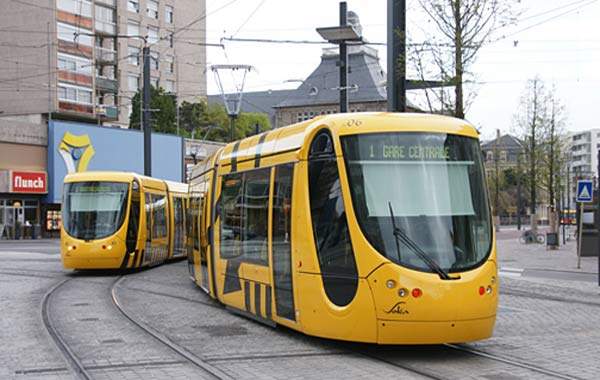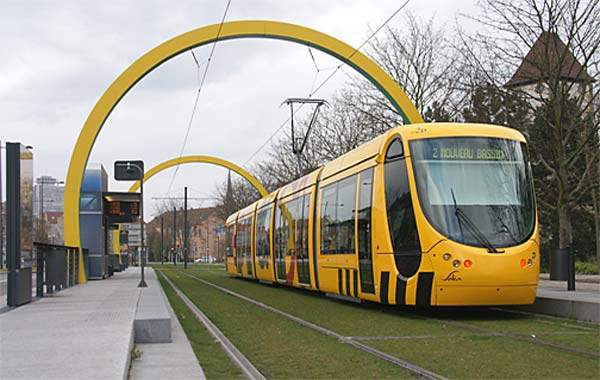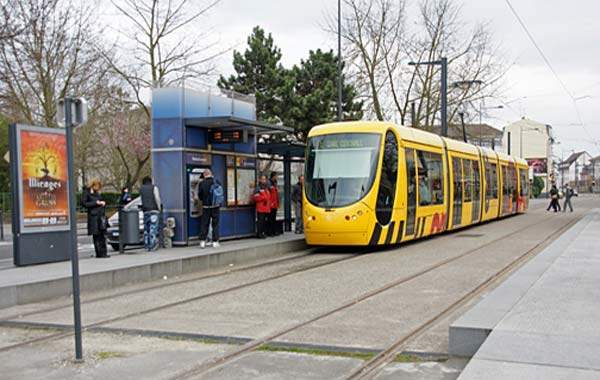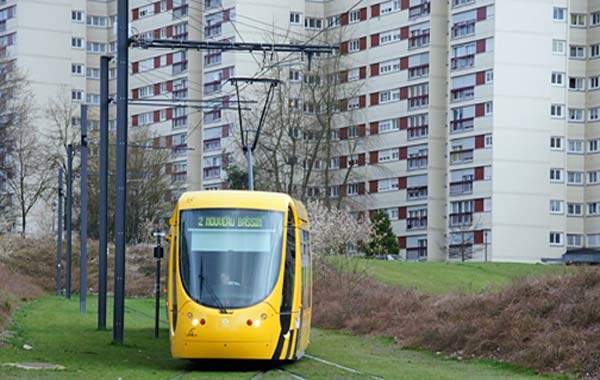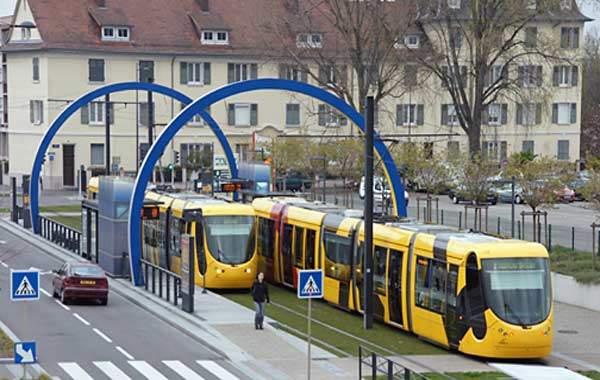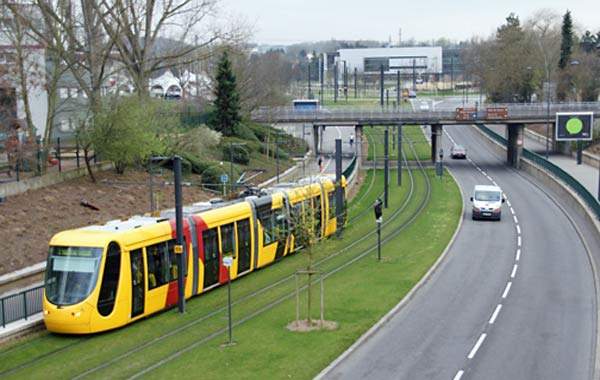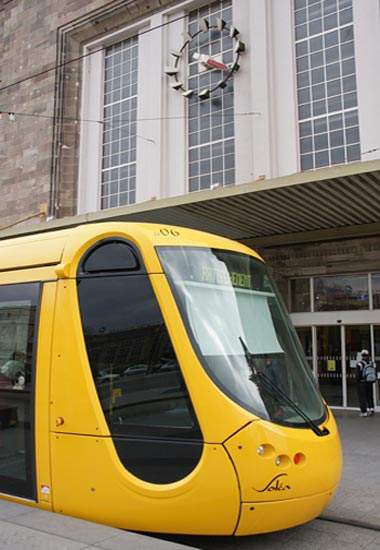Mulhouse in the Haut-Rhin département is the second-largest city of Alsace, a region of south-eastern France. With a history of shifting territorial ownership, it is physically close to, and economically involved with, near-neighbours Germany and Switzerland.
Mulhouse grew through its strategic location and by drawing a workforce for the principal industries of textiles (as referenced within the city’s name: mühl – mill) and engineering, the latter once including locomotive manufacture.
The decline in some activities has made Mulhouse the subject of urban renewal, a process in which the tramway project is playing a significant and highly visible part. Included in a complex of museums that contribute to tourism is the Cité du Train, the home of the French national railway collection.
THE PROJECT
The area transport authority is SITRAM (Syndicat Intercommunal des Transports de l’Agglomération Mulhousienne). Covering the urban tramway and related tram-train project, a feasibility study was carried out in 1997–8. Systra was awarded the project management contract in 2000 and became the engineering consortium leader, with construction beginning in 2003.
A larger tram scheme was originally envisaged to the one opened by President Chirac in May 2006, this first operational phase costing around €248m, being slightly below budget. With principal shareholdings by SITRAM and the operating specialists RAPT and Transdev, the Soléa organisation is responsible for running Mulhouse’s tram and bus services.
INFRASTRUCTURE
The 1,435mm gauge system using the standard 750V dc overhead electrification consists of two routes, each with two tracks. There is one intersection at the four-platform Porte Jeune in the city centre. Easy access is provided to trams from ramp-fitted low platforms.
With little in the way of major structures required and apart from the bright yellow scheme of the trams, the main visual symbol of the system is the paired arches designed by Daniel Buren that support the catenary at Line 2 stops. Line 1 is the site of installations by the German artist Tobias Rehberger.
The shorter of the two routes and running broadly north-south, Line 1 has its southern terminus at the SNCF Gare Centrale. As well as the Basel-Strasbourg TER, an SBB half-hourly service to Basel (many commute from France to Switzerland) and other local SNCF trains, Mulhouse Ville station joined the TGV Est timetable from 2007, giving a three-hour timing to Paris.
Line 2 has a mainly north-east to south-west axis that serves a diverse range of areas. These include including high-density housing around the Coteaux terminus, prosperous suburbs, a University campus (with one of the line’s two park-and-ride sites) and an entertainment complex by the Nouveau Bassin terminus. Around the Porte Jeune interchange in Mulhouse’s compact central area, extensive building and remodelling is taking place.
ROLLING STOCK
As with most of the modern era French light rail systems, the Mulhouse tram fleet is entirely comprised of Alstom Citadis vehicles. The bi-directional type 302 variant has five sections and is 100% low-floor. Maintenance is carried out the system depot near the Musée de l’Auto stop.
The 27-strong fleet that cost €48m is ample to operate the system that will now prevail for several years. From 2008 Mulhouse has been able to lease five sets for four years to Transdev subsidiary Yarra Tram in Melbourne, Australia. A 2km line in Buenos Aires, Argentina, is also using two Mulhouse Citadis units for a one-year demonstration service in 2007–8.
SIGNALLING AND COMMUNICATIONS
The tramway uses conventional line-of-site control, with signals at road interchanges where Line 2 has automatic traffic priority. The system’s control centre is at the depot. Stops are equipped with service indicators and trams feature visual and audio announcements of stops, the latter incorporating specially composed musical links.
THE FUTURE
Line 1 is projected to extend northwards from Rattachement towards the communes of Kingersheim and Wittenheim. The first part, a three-stop addition to Bourtzwiller, is due to open in 2009. Soléa indicates that it expects this and other expansions to complete a 38-stop system by 2011.
A more radical development will be the introduction of a tram-train operation onto the system. This will double frequencies on the Thur valley line to the north west of Mulhouse, also offering shorter overall journey times than at present for most travellers. There will be 18 stations, four of them new.
The service currently uses conventional heavy rail stock on the main line into Mulhouse Ville SNCF station. The tram-train service would initially extend 20km to Thann Nord, with a longer-term objective of reaching Kruth, further up the valley into the Vosges mountains.
The full scheme would require use of around 36km (22.4 miles) of SNCF track, a short section of which is the Basel-Strasbourg main line. Multi-stop access to the city centre for a service terminating outside Mulhouse station (Gare Centrale tram stop) would require a spur from the 25KV ac-equipped SNCF line to join tram Line 2, likely to be near the present Daguerre stop.
An order for 12 Siemens Avanto 100km/h (62mph) units has been placed to run the service. With a capacity for 229 passengers (80 seated), this five-module, two-system stock is similar to that in use on the T4 Aulnay-sous-Bois-Bondy line in north-east Paris.


